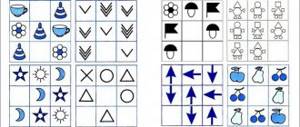For children
A variety of outdoor ball games for children are of great importance for the development of physical qualities and the development of communication skills. In addition to helping improve agility and endurance, each child learns to communicate and interact with others. You can play in the courtyard of a residential building, on a picnic, in a country plot, on a sandy beach, in a summer camp or kindergarten while walking. You can even find a unique classification of what types of ball games there are. They are divided into types depending on the age of the participants, their number, and the final goal.
For 2-4 people
Sabzhe is a very popular ball game designed for 3 or 4 people. It will require a light, small projectile. For maximum comfort, all participants are seated on a bench. Then a presenter is selected, who stands in front of the players and begins to throw the ball to them one by one, asking questions and offering funny answers to choose from. Usually asked:
- What is your name?
- How old are you?
- Where do you work?
- What is your favorite hobby?
If the player does not like the option proposed by the presenter, he returns the projectile. If he suits him, he catches him. During the throw, the presenter can call the “magic” word “sabzhe”. If the player catches the ball after hearing it, he is free to come up with his own answer. Each participant should have a story about themselves, which should be told at the end.
There can be any number of questions, the main thing is that the answers to them are unusual and funny, but not offensive.
"Square" is an outdoor game with a soccer ball for four players. First, the figure of the same name is drawn on a flat area. It is divided into four equal parts, with a circle drawn in the center. Each participant must stand in their designated square.
“Square” with a ball has several varieties, but in its most popular version, the rules of the game are as follows:
- First, the ball is thrown into the center of the circle. Whichever side he rolls to is the one to start with.
- The presenter serves the ball diagonally so that it hits the center and bounces to someone else's area of the court.
- The player should return the projectile after one contact with the surface in his zone. In this case, you cannot touch the ball with your hands; the return strike must be made with your feet, knee or head.
- If the ball does not hit the opponent's square, then the server gets 1 point.
- If the opponent's quarter is hit more than once, the receiver receives a point.
- If the ball, after being passed, falls outside the square, then the batter is considered “out”.
- When the projectile hits the line, the batter takes it in his hands and plays it according to the principle of the beginning of the set, only with the player whose line the ball hit.
- If the ball hits in a circle, then it is played as standard - diagonally.
Before you start playing square with a ball, the participants need to agree on how many points the competition will last. Usually the count is kept to 2.
“Bear the Bear in the Forest” is an excellent option for playing outdoors with a ball for preschool children and primary school students. First, a line is drawn on one side of the site - this is the forest where participants will pick mushrooms and berries. On the opposite side, a place is outlined for the houses in which the children will hide. Another line is marked to divide the entire site into two halves. Circles are drawn in the middle of each resulting clearing - these will be dens for bears.
Two children are chosen to play the role of guides, bears. They must take a place in their dens and turn their backs to other children. Secretly from the bears, one of the guys who will run away from the drivers is given two small balls. At a signal, the children head across the entire playground to the forest, where they begin to imitate picking berries and mushrooms, saying slowly:
I take mushrooms and berries from the bear in the forest, and the bear sits and growls at us!
After the word “roars,” the bears jump out of their dens and begin to catch players on their field who are trying to run across the entire area and hide in the house. Those who were caught are taken to their lair. The players, who must hit the leaders with the ball, try to “shoot” the bears. If this was successful, then the catcher crouches and stops catching up with the participants. At this time, another bear can dominate both his own and someone else's half.
Another famous ball game is “I Know 5 Names.” Children must line up one after another. It is better to play the game with a rubber ball, which is given to the participant in front. The first player begins to hit the projectile on the ground, saying in rhythm: “I know five names of girls: Lena - one, Katya - two, Ira - three, Anya - four, Sveta - five.” After this, the projectile is passed to the next participant, who calls five more names. The last child in the column must finish. If only two children are playing ball, then each time a name is called, you can pass a move to a partner.
“Stander-stop” - a large number of participants is not required to hold a children’s game on the street. First, a leader is selected who takes the central place. The rest of the participants stand a few steps away from him. While throwing the ball up, the driver loudly pronounces the name of one of the players, for example: “Stander - Andrey.” The children begin to run away in different directions. Only the one whose name was announced remains in place and catches the ball, which must first hit the ground, shouting: “Stander-stop.”
Everyone who was running around should freeze in place after these words. And the one who catches the ball tries to hit one of the participants. When hit, the “knocked out” player takes the place of the driver. The game starts again. If the ball does not hit the “statue”, then everyone comes to life and continues to run around the court. The driver himself picks up the projectile and shouts “Stander” again, but with a different name. This type of game is great to play outside in a large company.
You can play “Edible-Inedible” together or with a large number of participants. First, a leader is selected. The remaining players can stand in a row or in a circle at a distance of 2-3 meters. The presenter calls any word and throws the ball to each participant in turn. If it is called edible, then the player must catch the projectile, if inedible, then hit it back. Whoever makes a mistake or doesn’t catch something edible becomes the leader.
The “Goat” game is popular among children of all ages. For this outdoor game, you also cannot do without a soccer ball, but you will also need a wall. All participants line up in a column in front of her at a distance of about 2 meters. The first player kicks the ball against the wall and runs to the end of the line. The next child hits the bounced projectile into the wall and repeats the actions of the previous one. All players do the same. If someone misses the wall or the ball, then he is assigned the first letter from the word “Goat”. This continues until someone collects the entire word.
“Frog” is an option for a not very large company. Children play ball near the wall. A horizontal line is drawn on it in advance, below which the projectile cannot be thrown. The players stand one behind the other, the first one must be at a distance of 2 meters from the target. He throws the ball at the wall no lower than the mark. After it bounces off the ground, the player must jump and spread his legs so that the projectile flies between them. The next participant catches him, the first becomes the last. If you fail to jump over the ball or touch it with your foot, then for each mistake in turn a letter from the word “Frog” is assigned. Whoever completes this word is considered a loser.
To play "Dogs" you need at least three people. Everyone sits in a circle and chooses a leader—the “dog.” When there are many children, you can appoint two drivers who should stand in the center of the circle. Players must throw the ball to any participant. The task of the “dogs” is to catch the projectile. The one from whom the drivers intercepted the ball takes their place.
To develop your imagination, you can play “Sabzh” with funny questions
“Square” is the favorite yard game of all boys
“Stander-stop” is suitable for developing reaction speed, dexterity, and eye
To expand your vocabulary, memory, and attentiveness, you can play “I Know 5 Names”
If you want to laugh and run around, you should choose the game “Bear in the Forest”
For a large company
One of the famous games for the big one. Before starting, all participants stand in a circle. Then the ball is thrown to each player in random order. If someone fails to catch it, then the one who delivered the projectile takes one part of the body from the penalty box. If, for example, a leg, then the dropped ball continues the game, standing on one leg; if a hand, catch it with one hand. When a cripple throws the ball to a player, but he does not catch it, the penalty box can regain the lost part of the body or take it from the opponent. Anyone who cannot cope with his loss and cannot catch the sports equipment leaves the circle. The last "surviving" participant is considered the winner.
“Hot Potato” is worth playing if a large and friendly company has gathered in the yard. All participants stand in a circle and throw the ball to each other. If someone doesn’t catch it, then they squat down in the center of the circle. Now he will have to catch the ball in this position to return to his place. Several participants can get inside the circle at once. If one of them manages to catch the shell, then everyone is released from captivity.
"Dodgeball" refers to sports games with a ball. To carry them out you will need a rectangular area in the yard or park. Two bouncers stand on opposite sides, and all other participants are located chaotically in the center. The first ones try to hit the players who are trying to dodge the ball. But participants should not go beyond the boundaries of the site. The one who is hit by the ball is eliminated from the game. When the bouncers knock everyone out of the center, new drivers are appointed and everyone starts over.
Various ball games can be played in the form of relay races. A well-known option is “Pass the Ball,” when the members of each team stand behind each other, and the first guys have a sports equipment in their hands. After the signal, the first player, raising his arms above his head, begins to pass the ball to the comrade standing behind him. The last one in the column, after receiving the shell, runs to the beginning of the line and starts the relay all over again. This continues until the very first participant is ahead of everyone. The team that completes the task faster wins.
Another game that kids should play is Ball Hold. Participants must find a partner and hold the apparatus with their foreheads while running. Hands are on the partner's shoulders. If the ball falls, it is picked up and the relay continues. You can diversify the competition using other ways of holding the projectile - with your stomachs or your back.
Ball relay races are one of the most popular ways to spend leisure time for large people class=”aligncenter” width=”600″ height=”422″[/img] The game “Dodgeball” will allow you to spend time actively, fun and noisy
Agile goalkeeper
Number of players: 6 or more. Venue: outdoors or in a spacious room. Props: 2 balls. Preparation: draw (or otherwise designate) a circle. Rules of the game: players stand in a circle and begin to pass the balls to each other (only with their feet!). In the center of the circle, 1-3 drivers stand (depending on the total number of players) and try to intercept the ball. If the driver touches the ball, he leaves the circle and changes places with the one who just lost the ball. This game is great training for a goalkeeper!
For teenagers and adults
Fun games on the street with balls will create a special atmosphere of general high spirits and unite all participants of different ages. Of course, such outdoor activities will require some preparation or unusual ideas, but you can also use the usual options. Pioneerball is very popular among teenagers and adults. The game uses a volleyball ball and a net. Teams can consist of 6–10 people. There is one important rule in this game - an equal number of players. Conventionally, the entire territory is divided into zones, and a specific group is responsible for each area on the site. The players' task is to defend their territory so that the ball does not fall in their half. In this case, the projectile should be caught in the hands, and not hit.
Football is a great game for teenagers. Here, not only the techniques of movement and ball handling are improved, but also the speed of thinking improves. Participants of both teams can only pass the projectile with their feet and head; hands cannot be used. The task is to score a goal against the opponent.
Another famous street game is volleyball. It is played on an area separated by a net. The ball is thrown over it during the game; it can only be returned. There are no time limits, the competition continues until one of the teams scores 25 points.
Often adults and teenagers choose basketball to have a good time. The goal of the game is to throw the ball into the hoop. Whose team scores more points becomes the winner. Only five people participate on the field on each side. The game is best played on a flat rectangular area. For each shot in the basket from a certain place, points are scored differently.
Basketball
Volleyball
Pioneerball
Football
Missed goal
Number of players: as many participants as possible, can be carried out with an audience. Venue: outdoors or in a spacious room. Props: none. Preparation: Divide into 2 teams. Rules of the game: The leader faces the players. If he waves with his right hand, team 1 shouts in unison: “Goal!”, if he waves with his left, team 2 answers: “Past!” The presenter can wave his right hand several times in a row, then it should turn out: “Goal! Goal! Goal!". When the presenter sees that the audience has roughly understood the rules, he begins to confuse them. For example, 1 team waves with his left hand. If someone squeaks in a weak voice: “Goal” (and believe me, there are more than one), the team is given a penalty point: the score is 0:1. Thus, the game is played up to a certain (pre-agreed) number of victory points.
Safe gaming rules
Needless to say, interesting games with a ball on the street, regardless of the age of the participants, bring great joy. However, all this entertainment is sometimes associated with a strong rebound of the projectile and unpredictable hits. Therefore, before playing children’s games on the street, all participants should be familiarized with the safety rules. It is important to adhere to these recommendations:
- do not aim at the heads of the players;
- try to choose the force of throwing the ball at the participants, taking into account the distance to them;
- closely monitor the movement of players and the ball on the court;
- do not interfere with catching a projectile by a player who is closer to him;
- do not take the ball away from those who caught it first;
- do not fall to the floor in order to dodge the ball;
- catch the projectile with both hands from below;
- Avoid sudden stops.
In fact, there are various games without a ball or with a projectile, and they all have a lot of positive qualities. At first glance, such fun may seem simple, but they play a big role in intellectual and physical development. Similar games are recommended for preschoolers, junior and senior schoolchildren, and all adults.
It is important to play with the ball away from the roadway
Accurate football player
Number of players: 2 or more. Venue: outdoors or in a spacious room. Props: ball, blindfold. Preparation: the participant is blindfolded and moves away from the ball at a distance of about 10 meters. Rules of the game: at the signal you need to run up and hit the ball. The one who manages to do this wins. You can give each player a certain number of attempts and choose the winner based on the overall result.
Top scorer
Number of players: 2 or more. Venue: outdoors or in a spacious room. Props: goal, ball. Preparation: determine the order: someone stands at the goal, someone shoots. Rules of the game: The first player makes a series of five hits. The goalkeeper's job is not to miss a goal. The goals scored and missed are counted. For example, 1 scored, you get “+1” point, and the goalkeeper gets “-1” accordingly. The next player makes his series of shots. The game continues until everyone plays the role of goalkeeper and player. The points are added up. The one with the most points at the end of the game wins. If there is a tie, additional shots are taken.
One touch
Number of players: 3 or more. Venue: outdoors or in a spacious room. Props: goal, ball. Preparation: determine who is first at the goal and to what score the game is going on.
Rules of the game: The goalkeeper puts the ball into play. The remaining players can make no more than one touch at a time. If a player makes two touches in a row or misses the goal (the ball goes beyond the goal line), he takes the place of the goalkeeper. If the goalkeeper catches the ball flying through the air, the player who took the shot stands in the goal. Or, according to another version, the goalkeeper can “shoot” (hit him with the ball) any player. In this case, the goalkeeper has no right to leave the penalty area. “The Shot Man” takes his place at the goal. The first one to miss a predetermined number of goals loses.
Fight for the ball
Number of players: 10 or more. Venue: outdoors or in a spacious room. Props: ball. Preparation: divide into 2 teams, choose captains.
Rules of the game: team captains stand in the middle of the court, all other players in pairs (from different teams) are freely placed within its boundaries. The presenter throws the ball. The captains try to catch it or return it to one of their players. Having taken possession of the ball, the player seeks to pass it to one of his “friends”. The players' task is to make 10 passes in a row between their players. The team that succeeds wins a point and the game starts again from the middle of the court. Players of the other team hit, intercept the ball from their opponents and pass it to their players. If the ball is intercepted by the opponents, the pass count starts again. It is forbidden to snatch the ball from the hands of opponents (you can only intercept it). If the ball goes out of bounds, the opposing team throws it in at the point where it crosses the line. If two players grab the ball at the same time, then a held ball is played between them. If the opponent commits rudeness (snatching the ball, pushing, etc.), the game stops and the ball is passed to the opposing team.
The team with the most points wins.
For a children's party
Intellectual competitions for children are a great way to usefully diversify a birthday, New Year's celebration or other celebration.
Quiz
One of the simplest and most convenient formats is a quiz. Small participants need to be divided into teams and asked questions either in turn or sequentially. The questions should be simple, but developing thinking - they can be associated with the school curriculum, or with simple natural phenomena, colors, sounds, names, etc. It is worth remembering that according to the results of the competition, prizes should go to everyone.
Football relay
Number of players: 6 or more. Venue: outdoors or in a spacious room. Props: goal, ball. Preparation: Divide into 2 teams, line up in a column one at a time behind the center line facing the opponent’s goal. The first numbers have the ball. Rules of the game: At the signal, the first numbers begin to kick the ball towards the opponent’s goal, shoot from outside the penalty area, pick up the ball and return to their team. Having reached their column, they pass it to the second numbers, and they themselves stand at the end of the line. The team that finishes the relay first wins. You cannot start running before receiving the ball from your partner - this is considered a gross violation. If the ball does not hit the goal, you should pick it up behind the end line and start dribbling from there towards your team.











